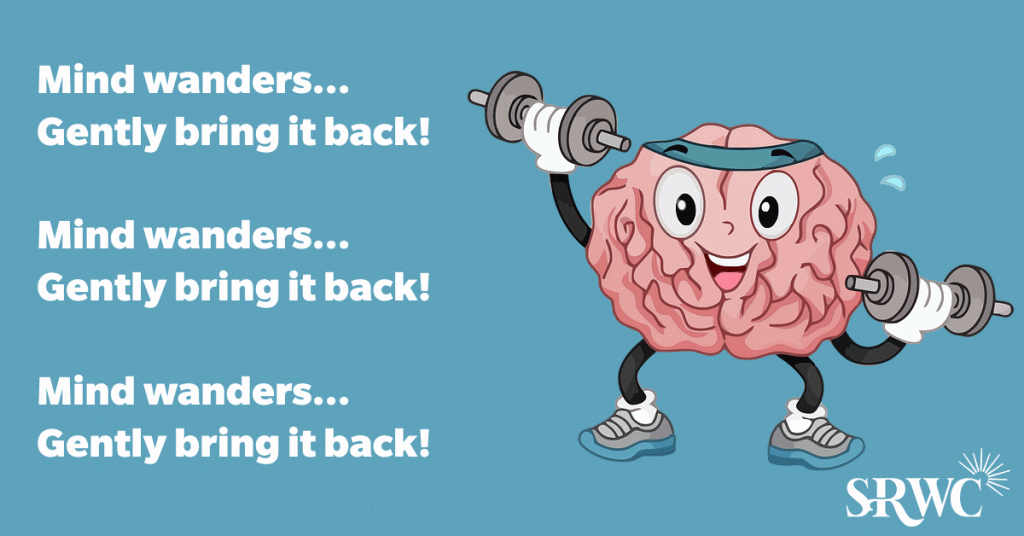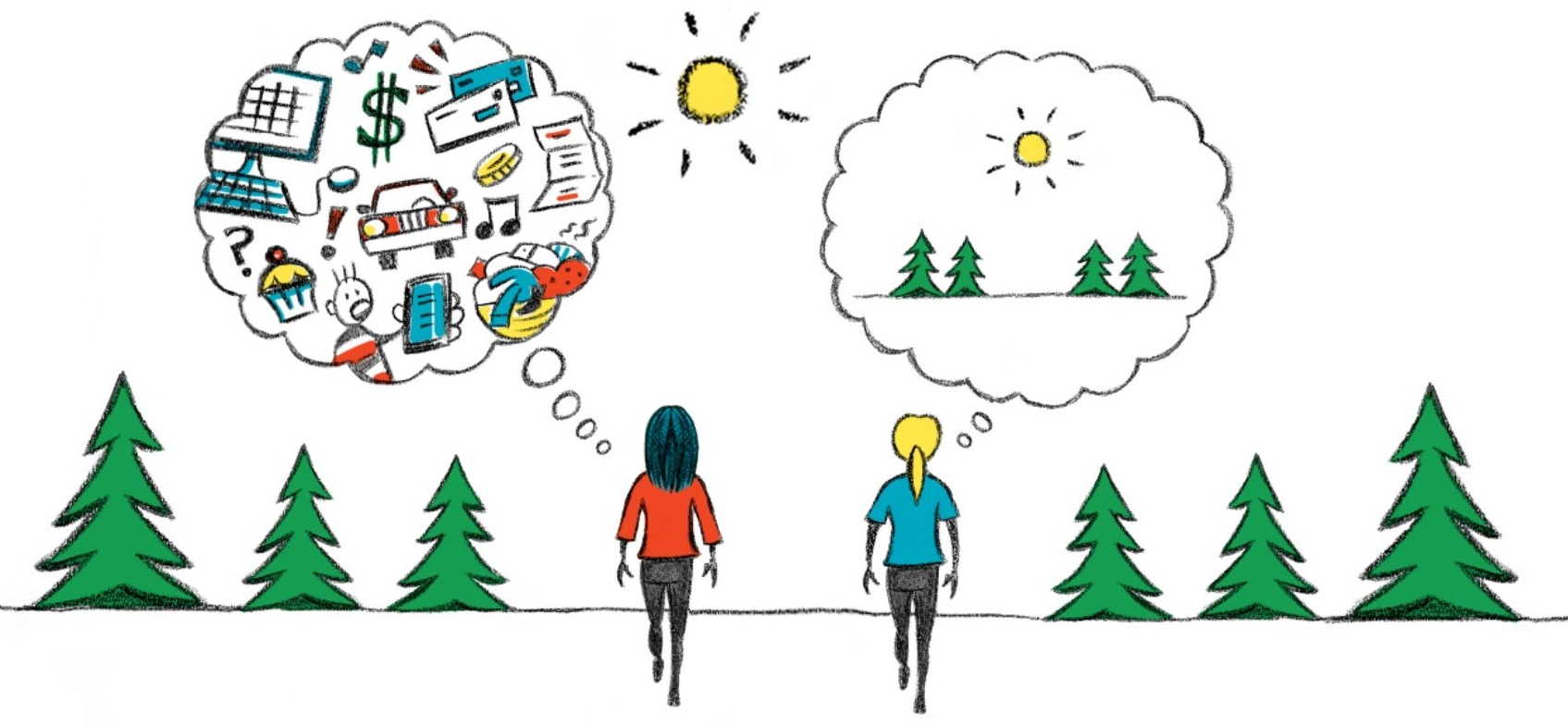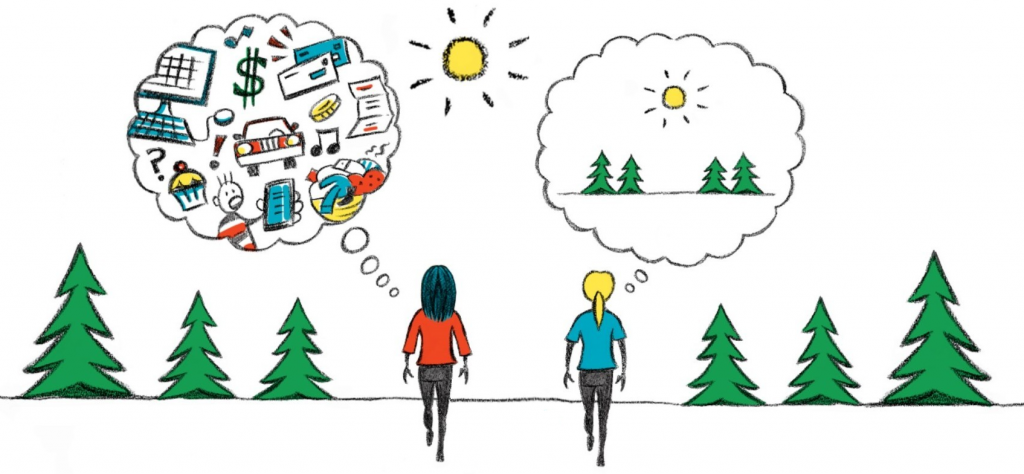5 Tools for Mindfulness in Addiction Recovery
The skill of being mindful can be a powerful tool for individuals recovering from substance use disorder, addiction, or other mental health issues. Many people in recovery find they experience similar triggers to use, and the benefits of practicing mindfulness may be the key to dealing with those triggers. There are many ways to be mindful, and they don’t all require meditation. Knowing this can open new doors for using mindfulness in addiction recovery. Let’s find out how mindfulness in recovery helps, and how you can start using these tools today.
What is Mindfulness?
Mindfulness is simply noticing, and accepting. Noticing what is happening here and now. Accepting, without judgment, the present moment. This can include everything from breathing to the full emotional state.
Being mindful doesn’t have to follow any religious belief. It doesn’t mean someone folding themselves into a pretzel and chanting. The tradition of mindfulness is ancient, but it has been updated by many modern masters, and people from all walks of life use mindfulness every day.
What is Addiction Recovery?
SAMHSA‘s working definition of “recovery” is:
“A process of change through which people improve their health and wellness, live a self-directed life, and strive to reach their full potential.”
There are 4 aspects of life that support recovery:
- Health: Managing one’s disease(s), and living in way that supports physical, emotional, and spiritual health.
- Home: A stable and safe place to live;
- Purpose: Meaningful daily activities, including work, school, and family. This includes volunteering or creative endeavours, as well as having the income and resources to participate in society; and,
- Community: Relationships and connections that provide friendship, love and hope.
3 Reasons to Use Mindfulness in Addiction Recovery
Some of the biggest risks to long-term sobriety are not outside triggers, but inner thoughts and emotions, including:
- Holding on to resentments,
- Fear of strong emotions, and,
- Not taking pleasure from things that used to bring joy.
Resentments
- People develop resentments out of frustration with situations, things, and other people they can’t control.
- Being mindful teaches people how to be more satisfied with life. Thus, being able to experience and accept life without judgment goes a long way towards letting go of those resentments.
Fear of Emotion
- Addiction almost always starts in pain. Many people with substance use issues found it let them avoid difficult feelings, like fear, anger, guilt, and shame.
- Those emotions come from brooding on past regret or worrying about the future. Mindfulness, on the other hand, brings attention to the present. So, this is a powerful tool to managing guilt and worry.
Lack of Joy
- Those living with addiction may find they don’t get the same joy from things they used to love. This can lead to a slip or lapse if they are not ready to deal with it.
- Being mindful helps people be more engaged in activities. Therefore, it makes it easier to see and savour the small joys in life as they happen.
5 Mindfulness Exercises You Can Do
Here are 5 ways to practice mindfulness, 2 basic meditations, and 3 suggestions for practicing mindfulness in daily life. Each activity is intended to simply draw your attention to the present moment, thus, allowing you to let go of overthinking and help you find something to appreciate. But before we start, let’s talk about something we all have–trouble keeping our mind focused.
Wandering Mind
Everyone’s mind wanders when being mindful. It’s normal, and nothing to feel bad about, no matter how often it happens. In fact, each time the mind wanders and is brought back is like a “rep” that builds your “mindfulness muscle“.
- Notice the mind has wandered,
- Gently re-direct it back to the activity.

Everyone’s mind wanders during mindfulness. Every time we see it and bring it back, we are building our “mindfulness muscle”.
With that in mind, here are a few activities for practicing mindfulness in addiction recovery:
1. Body Scan: In this activity, you will pay close attention to physical sensations throughout your body. The goal isn’t to change or relax your body, but to become more aware of it. Don’t worry about how long it takes, but you do want to take your time.
- Start by paying attention to the feelings in your feet. Do they feel warm, cool, do you notice any discomfort, or pain?
- Slowly move up your body. Move your attention from your feet to your head a section at a time.
- Legs
- Pelvis
- Stomach
- Chest
- Back
- Shoulders
- Arms
- Hands
- Neck
- Head
- Spend some time on each of these body parts, just noticing the sensations.
- Then, move your focus back down your body in the same order. Remember: move slowly, and just pay attention.
2. Focus on Breathing: We are always breathing, but most of the time aren’t paying attention to it. This makes breathing a useful tool for staying focused on the present moment.
- Start with taking a few deep breaths, then allow yourself to breathe naturally.
- Notice the feeling of air as it passes through your nose or mouth.
- Feel the rise and fall of your belly and torso.
- Hear the sounds that accompany each inhale and exhale.
- When your mind wanders, just notice it, and gently turn your focus back to breathing.
No Patience for Meditation?
Not everyone has the patience to sit for a formal meditation. You may want to practice mindfulness in daily activities instead. This could include:
3. Mindful Walking: Next time you walk somewhere, try not to rush.
- Take your time, and notice how your body moves while you walk.
- Notice the environment you are walking through.
- Smell the smells.
- Hear the sounds.
- See the things you pass by.
4. Mindful Eating: Next time you eat, bring your full attention to the food.
- Before eating, see how it looks on the table in front of you. Notice its colour, how the light reflects from its surface, and its size.
- As you pick it up notice the weight, and how the food feels against your skin. Notice its texture, and its temperature. Pay attention to its smell.
- When eating, observe how it feels in your mouth. Notice how your teeth sink into it. Pay close attention to the flavor, and how it spreads across your tongue.
- Notice how your body changes–does your mouth fill with saliva? Does your tongue feel hot or cold?
5. Good Morning: Instead of having your thoughts spin off to the day ahead, trying starting mindfully.
- As you wake in the morning, bring your attention to your breathing. Take mindful breaths.
- Focus on your breathing.
- Notice the effects of breathing throughout your body.
Tip: You don’t have to jump right in and meditate for 30 minutes. Try sitting for 5 minutes, or do a meditation before bed. It’s OK to keep it short, especially when you are first starting out.
Guided Mindfulness – Listening
If you find it easier to listen to guided meditations, you can also find a guided meditation playlist on our YouTube channel!
Guided Mindfulness – Reading
You can also download a PDF of these activities to read on your own.
Resources for Practicing Mindfulness for Addiction Recovery
- Substance Abuse and Mental Health Services Administration (SAMHSA), working description of recovery
- Modern master of mindfulness
- Positive Psychology (Harvard Medical School): Harnessing the power of happiness, mindfulness, and inner strength
- New Directions for Youth Development: Substance Misuse Prevention: Addressing Anhedonia







